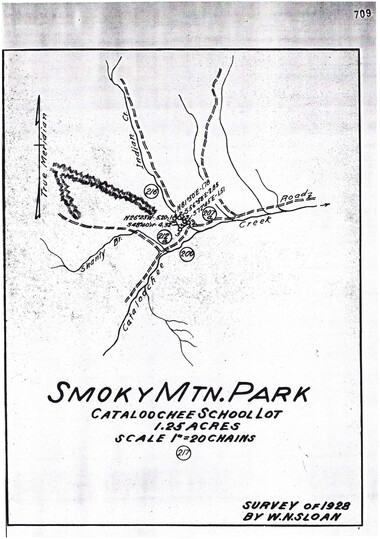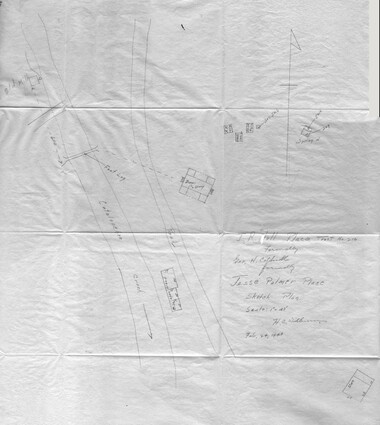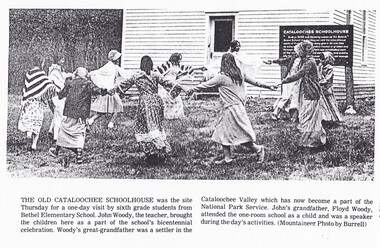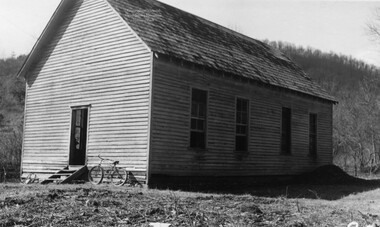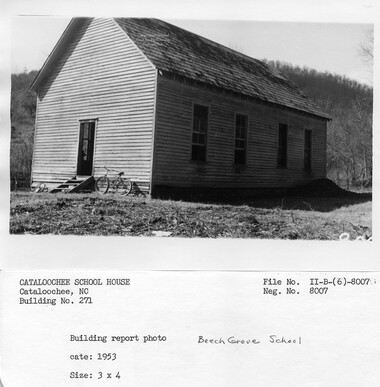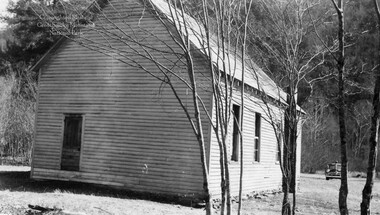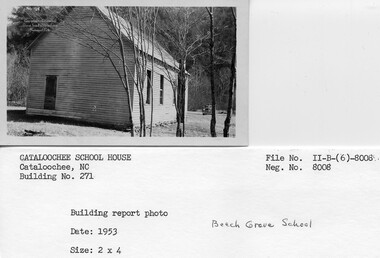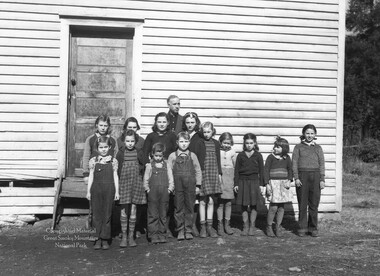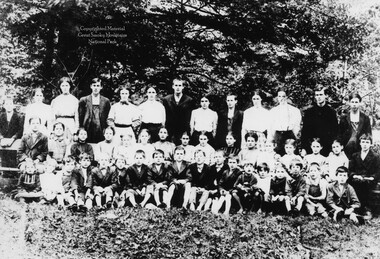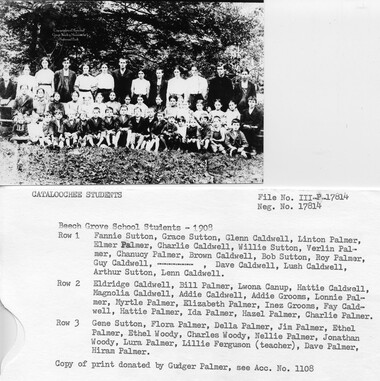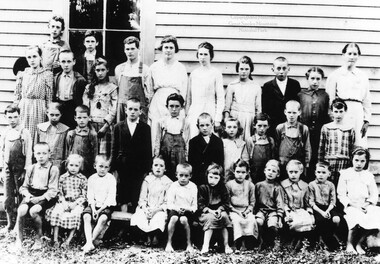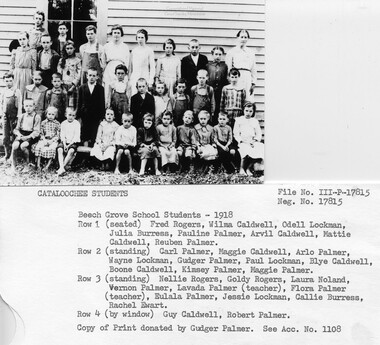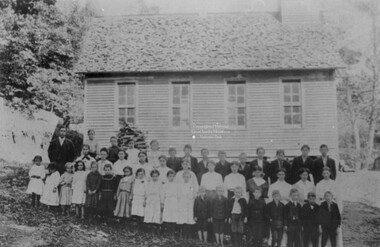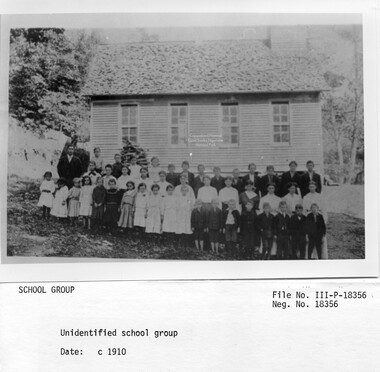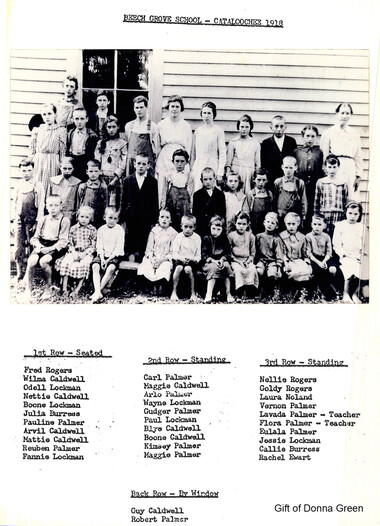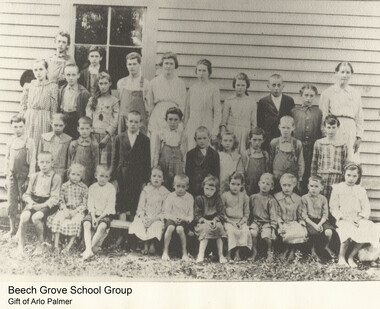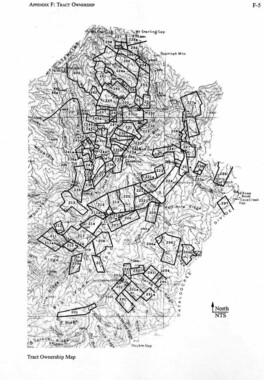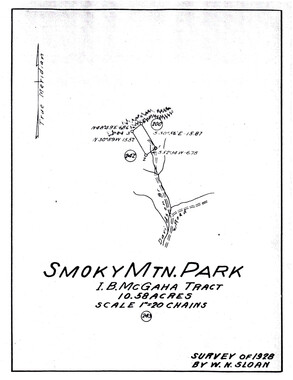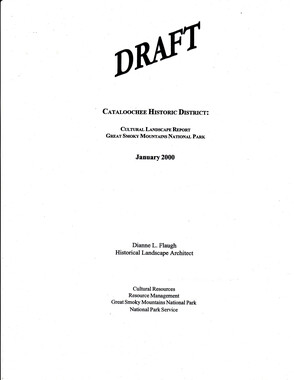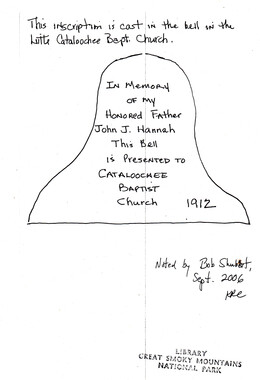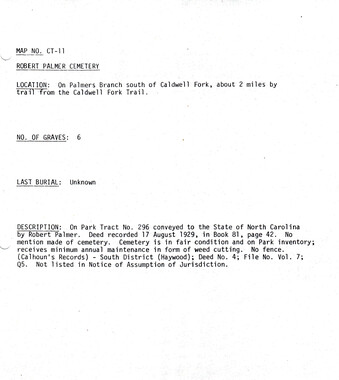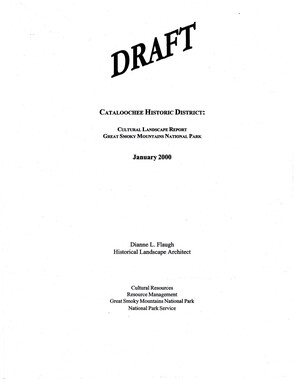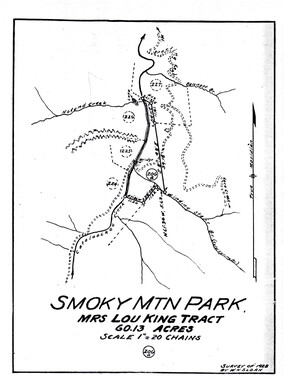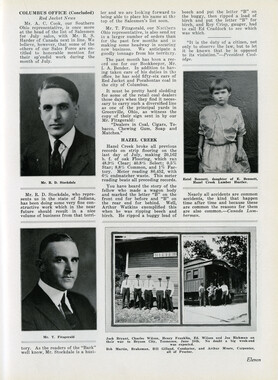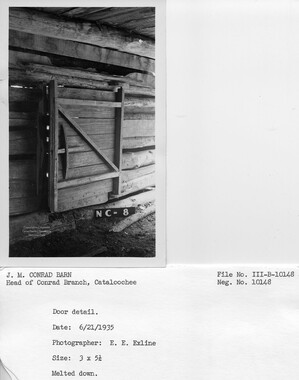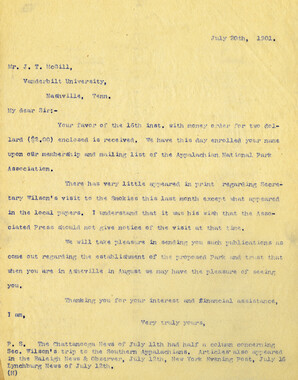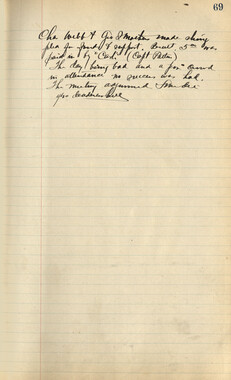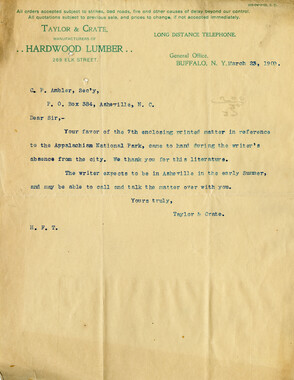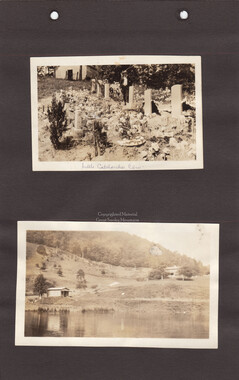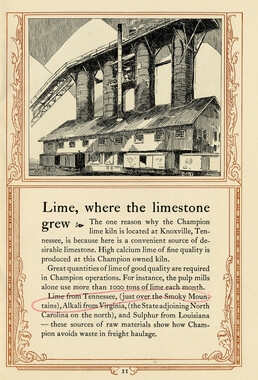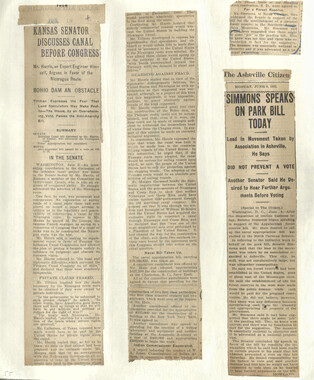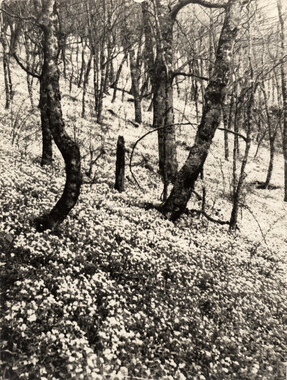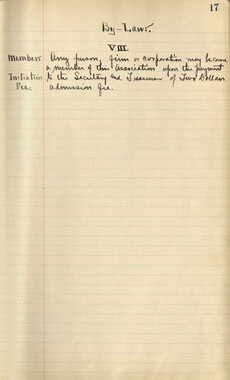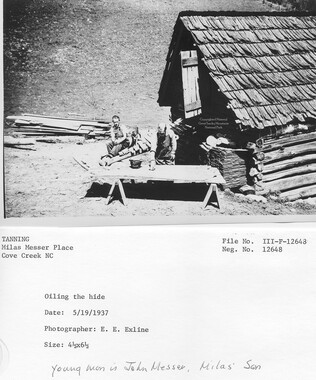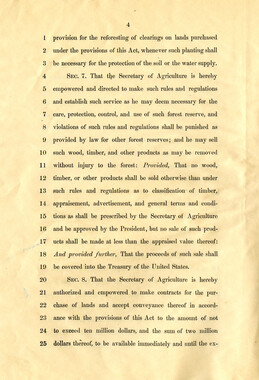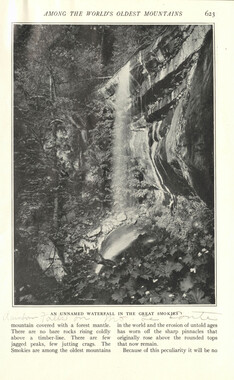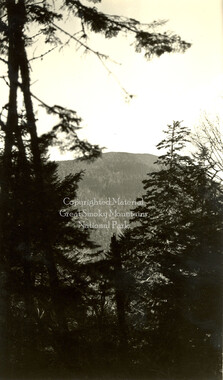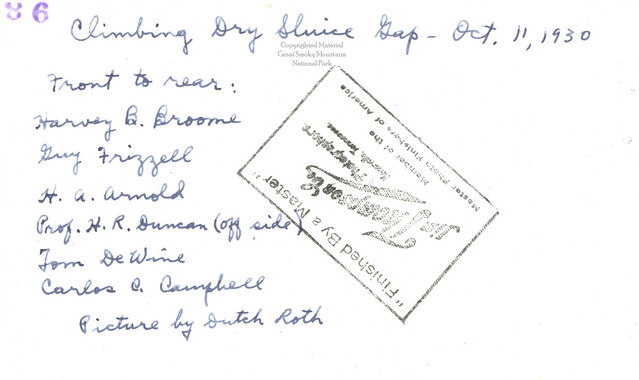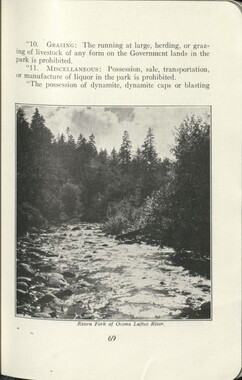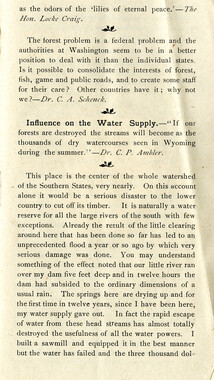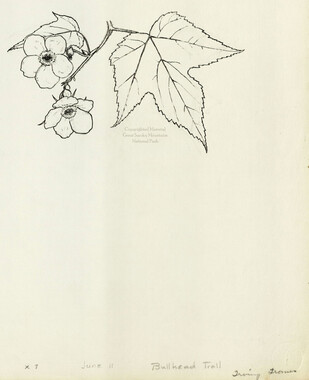Western Carolina University (20)
View all
- Canton Champion Fibre Company (2308)
- Cherokee Traditions (293)
- Civil War in Southern Appalachia (165)
- Craft Revival (1942)
- Great Smoky Mountains - A Park for America (2767)
- Highlights from Western Carolina University (430)
- Horace Kephart (941)
- Journeys Through Jackson (154)
- LGBTQIA+ Archive of Jackson County (26)
- Oral Histories of Western North Carolina (314)
- Picturing Appalachia (6772)
- Stories of Mountain Folk (413)
- Travel Western North Carolina (160)
- Western Carolina University Fine Art Museum Vitreograph Collection (129)
- Western Carolina University Herbarium (92)
- Western Carolina University: Making Memories (708)
- Western Carolina University Publications (2283)
- Western Carolina University Restricted Electronic Theses and Dissertations (146)
- Western North Carolina Regional Maps (71)
- World War II in Southern Appalachia (131)
University of North Carolina Asheville (6)
View all
- Appalachian National Park Association (53)
- Berry, Walter (76)
- Champion Fibre Company (5)
- Fromer, Irving Rhodes, 1913-1994 (70)
- Grant, George Alexander, 1891-1964 (96)
- Kephart, Horace, 1862-1931 (23)
- Masa, George, 1881-1933 (17)
- North Carolina Park Commission (105)
- Roth, Albert, 1890-1974 (142)
- Schenck, Carl Alwin, 1868-1955 (1)
- Stearns, I. K. (2)
- Thompson, James Edward, 1880-1976 (45)
- Weaver, Zebulon, 1872-1948 (55)
- Wilburn, Hiram Coleman, 1880-1967 (72)
- Allanstand Cottage Industries (0)
- Bennett, Kelly, 1890-1974 (0)
- Brasstown Carvers (0)
- Cain, Doreyl Ammons (0)
- Carver, George Washington, 1864?-1943 (0)
- Cathey, Joseph, 1803-1874 (0)
- Champion Paper and Fibre Company (0)
- Cherokee Indian Fair Association (0)
- Cherokee Language Program (0)
- Crittenden, Lorraine (0)
- Crowe, Amanda (0)
- Edmonston, Thomas Benton, 1842-1907 (0)
- Ensley, A. L. (Abraham Lincoln), 1865-1948 (0)
- George Butz (BFS 1907) (0)
- Goodrich, Frances Louisa (0)
- Heard, Marian Gladys (0)
- Kephart, Calvin, 1883-1969 (0)
- Kephart, Laura, 1862-1954 (0)
- Laney, Gideon Thomas, 1889-1976 (0)
- McElhinney, William Julian, 1896-1953 (0)
- Niggli, Josephina, 1910-1983 (0)
- Osborne, Kezia Stradley (0)
- Owens, Samuel Robert, 1918-1995 (0)
- Penland Weavers and Potters (0)
- Rhodes, Judy (0)
- Roberts, Vivienne (0)
- Sherrill's Photography Studio (0)
- Smith, Edward Clark (0)
- Southern Highland Handicraft Guild (0)
- Southern Highlanders, Inc. (0)
- Stalcup, Jesse Bryson (0)
- United States. Indian Arts and Crafts Board (0)
- USFS (0)
- Vance, Zebulon Baird, 1830-1894 (0)
- Western Carolina College (0)
- Western Carolina Teachers College (0)
- Western Carolina University (0)
- Western Carolina University. Mountain Heritage Center (0)
- Whitman, Walt, 1819-1892 (0)
- Williams, Isadora (0)
- 1810s (1)
- 1840s (1)
- 1850s (2)
- 1860s (3)
- 1870s (4)
- 1880s (7)
- 1890s (64)
- 1900s (294)
- 1910s (227)
- 1920s (461)
- 1930s (1585)
- 1940s (82)
- 1950s (15)
- 1960s (13)
- 1970s (47)
- 1980s (14)
- 1990s (17)
- 2000s (31)
- 2010s (1)
- 1600s (0)
- 1700s (0)
- 1800s (0)
- 1820s (0)
- 1830s (0)
- 2020s (0)
- Appalachian Region, Southern (80)
- Asheville (N.C.) (1)
- Avery County (N.C.) (6)
- Blount County (Tenn.) (159)
- Buncombe County (N.C.) (204)
- Cherokee County (N.C.) (10)
- Clay County (N.C.) (3)
- Graham County (N.C.) (108)
- Great Smoky Mountains National Park (N.C. and Tenn.) (438)
- Haywood County (N.C.) (263)
- Henderson County (N.C.) (13)
- Jackson County (N.C.) (58)
- Knox County (Tenn.) (21)
- Knoxville (Tenn.) (11)
- Lake Santeetlah (N.C.) (10)
- Macon County (N.C.) (25)
- Madison County (N.C.) (14)
- McDowell County (N.C.) (5)
- Mitchell County (N.C.) (7)
- Polk County (N.C.) (2)
- Qualla Boundary (22)
- Rutherford County (N.C.) (16)
- Swain County (N.C.) (516)
- Transylvania County (N.C.) (36)
- Watauga County (N.C.) (2)
- Waynesville (N.C.) (2)
- Yancey County (N.C.) (34)
- Aerial Views (3)
- Articles (1)
- Artifacts (object Genre) (4)
- Bibliographies (1)
- Clippings (information Artifacts) (77)
- Drawings (visual Works) (174)
- Envelopes (2)
- Financial Records (9)
- Fliers (printed Matter) (34)
- Guidebooks (1)
- Interviews (12)
- Land Surveys (102)
- Letters (correspondence) (219)
- Manuscripts (documents) (91)
- Maps (documents) (86)
- Memorandums (14)
- Minutes (administrative Records) (20)
- Negatives (photographs) (282)
- Newsletters (12)
- Paintings (visual Works) (1)
- Pen And Ink Drawings (1)
- Photographs (1657)
- Portraits (40)
- Postcards (15)
- Publications (documents) (107)
- Scrapbooks (3)
- Sheet Music (1)
- Songs (musical Compositions) (2)
- Sound Recordings (7)
- Speeches (documents) (11)
- Transcripts (46)
- Aerial Photographs (0)
- Albums (books) (0)
- Biography (general Genre) (0)
- Cards (information Artifacts) (0)
- Crafts (art Genres) (0)
- Depictions (visual Works) (0)
- Design Drawings (0)
- Facsimiles (reproductions) (0)
- Fiction (general Genre) (0)
- Glass Plate Negatives (0)
- Internegatives (0)
- Newspapers (0)
- Occupation Currency (0)
- Periodicals (0)
- Personal Narratives (0)
- Plans (maps) (0)
- Poetry (0)
- Programs (documents) (0)
- Questionnaires (0)
- Slides (photographs) (0)
- Specimens (0)
- Text Messages (0)
- Tintypes (photographs) (0)
- Video Recordings (physical Artifacts) (0)
- Vitreographs (0)
- Appalachian National Park Association Records (336)
- Carlos C. Campbell Collection (282)
- Cataloochee History Project (65)
- George Masa Collection (89)
- Hiram C. Wilburn Papers (28)
- Historic Photographs Collection (236)
- Horace Kephart Collection (126)
- Humbard Collection (33)
- Jim Thompson Collection (44)
- Love Family Papers (11)
- Map Collection (12)
- R.A. Romanes Collection (10)
- Smoky Mountains Hiking Club Collection (616)
- Zebulon Weaver Collection (107)
- A.L. Ensley Collection (0)
- Appalachian Industrial School Records (0)
- Axley-Meroney Collection (0)
- Bayard Wootten Photograph Collection (0)
- Bethel Rural Community Organization Collection (0)
- Blumer Collection (0)
- C.W. Slagle Collection (0)
- Canton Area Historical Museum (0)
- Cherokee Studies Collection (0)
- Daisy Dame Photograph Album (0)
- Daniel Boone VI Collection (0)
- Doris Ulmann Photograph Collection (0)
- Elizabeth H. Lasley Collection (0)
- Elizabeth Woolworth Szold Fleharty Collection (0)
- Frank Fry Collection (0)
- Gideon Laney Collection (0)
- Hazel Scarborough Collection (0)
- Hunter and Weaver Families Collection (0)
- I. D. Blumenthal Collection (0)
- Isadora Williams Collection (0)
- Jesse Bryson Stalcup Collection (0)
- John B. Battle Collection (0)
- John C. Campbell Folk School Records (0)
- John Parris Collection (0)
- Judaculla Rock project (0)
- Kelly Bennett Collection (0)
- Major Wiley Parris Civil War Letters (0)
- McFee-Misemer Civil War Letters (0)
- Mountain Heritage Center Collection (0)
- Norburn - Robertson - Thomson Families Collection (0)
- Pauline Hood Collection (0)
- Pre-Guild Collection (0)
- Qualla Arts and Crafts Mutual Collection (0)
- Rosser H. Taylor Collection (0)
- Samuel Robert Owens Collection (0)
- Sara Madison Collection (0)
- Sherrill Studio Photo Collection (0)
- Stories of Mountain Folk - Radio Programs (0)
- The Reporter, Western Carolina University (0)
- Venoy and Elizabeth Reed Collection (0)
- WCU Gender and Sexuality Oral History Project (0)
- WCU Mountain Heritage Center Oral Histories (0)
- WCU Oral History Collection - Mountain People, Mountain Lives (0)
- WCU Students Newspapers Collection (0)
- Western North Carolina Tomorrow Black Oral History Project (0)
- William Williams Stringfield Collection (0)
- Appalachian Trail (22)
- Church buildings (9)
- Civilian Conservation Corps (U.S.) (91)
- Dams (21)
- Floods (1)
- Forest conservation (11)
- Forests and forestry (42)
- Great Smoky Mountains National Park (N.C. and Tenn.) (82)
- Hunting (2)
- Logging (25)
- Maps (74)
- North Carolina -- Maps (5)
- Postcards (15)
- Railroad trains (8)
- Sports (4)
- Storytelling (2)
- Waterfalls -- Great Smoky Mountains (N.C. and Tenn.) (39)
- African Americans (0)
- Artisans (0)
- Cherokee art (0)
- Cherokee artists -- North Carolina (0)
- Cherokee language (0)
- Cherokee pottery (0)
- Cherokee women (0)
- College student newspapers and periodicals (0)
- Dance (0)
- Education (0)
- Folk music (0)
- Forced removal, 1813-1903 (0)
- Gender nonconformity (0)
- Landscape photography (0)
- Mines and mineral resources (0)
- Paper industry (0)
- Pottery (0)
- Rural electrification -- North Carolina, Western (0)
- School integration -- Southern States (0)
- Segregation -- North Carolina, Western (0)
- Slavery (0)
- Weaving -- Appalachian Region, Southern (0)
- Wood-carving -- Appalachian Region, Southern (0)
- World War, 1939-1945 (0)
- Sound (7)
- StillImage (2172)
- Text (655)
- MovingImage (0)
Cataloochee tract 217: Cataloochee School
Item
Item’s are ‘child’ level descriptions to ‘parent’ objects, (e.g. one page of a whole book).
-
-
Ed Trout Historic Structures Report DRAFT Great Smoky Mountains National Park National Park Service \ / ' Page 6 ... BEECH GROVE SCHOOL The wilderness was hardly cracked open when Cataloocheeans began to think about schooling for their children. The first school may have been on the site deeded by Julia Ann Palmer for the church in 1858. It was about~- mile from here, back toward the campground. It probably was a subscription school, financed by local contributions (or subscriptions) toward the teacher's salary. In 1859, the average monthly pay for a North Carolina teacher was $28, and the school term, 4 months. The Civil War and it's aftermath disrupted the society and economy of the South for many years, but schools continued to be held on a catch-as-can basis. Post-war efforts to reestablish and improve the schools reached into the mountains and Cataloochee valley. In 1868 the Haywood County Commissioners ordered the appointment of a School Committee in Big Cataloochee. P. Hopkins, Young Bennett and Lafayette (Fate) Palmer were the first, to be succeeded in later years by other local people. The Committeemen were to provide a schoolhouse with furnishings, hire and fire teachers, use textbooks adopted by the State Board of Education, visit schools in the district, gather and report school statistics, and attend to other details of running the schools. The North Carolina State School Law of 1869 prescribed the teaching of English grammar, reading, spelling writing, arithmetic, geography and other such studies as deemed necessary. The term was four months per year. All of this looked better on paper than in reality, largely because of chronic shortages of funds. Illiteracy rates got worse instead of better, after and because of the Civil • Page 7 •.. War, and due to the remoteness of the valleys. Those who could not read and write in the school age group (6-21) comprised 25% of the Cataloochee population in 1870, and 47% in 1880. Toward the end of the nineteenth century parents and educators tried hard to upgrade the school system. In 1888 the Haywood County Board of Education resolved that the "seats, desks and conveniences in all the public schoolhouses in the county are condemned by the said Board as inconvenient, inhumane, unhealthy and not in keeping with this progressive age". It further resolved that the School Committee of each district correct these deficiencies by supplying the~hoolhouses with proper equipment. Counties began to support schools with taxes, and subscription schools played a lesser role. Official control of schools by 1900 was becoming more assertive and sophisticated. In 1912 the State Board funded the cost of examining children for hookworm. Three years later it began a program of typhoid vaccination. Compulsory attendance was established in 1913, at least for the first four months of the term. In 1919 the term was extended to six months, and children were no longer excused to do farm work--at least in theory. School usually started in August. Daily sessions ran for six hours, relieved by morning and afternoon recesses, and a one-hour lunch period. A one-room schoolteacher was a very busy person. One of the peculiarities of mountain society prompted a complaint from the Haywood County School Board in 1928. It admonished the Cataloochee School Committee to quit hiring teachers so closely related to them by blood or marriage. In Cataloochee, they had few other choices! Page 8 ...• Beech Grove School was not the only one in Big and Little Cataloochee, but it is the only one left today. It's history is amusing. The Committeemen had long pestered the county school board to replace the ancient log building with a "modern"one. They even offered to furnish the lumber if the county would just pay for the nails. All pleas were ignored. Returning from Waynesville one night, the committeemen decided, on the advice of a bottle of whiskey, that they would get a new school. Removing all desks and other furnishings, they reduced the log school to apLle of ashes. The county built this new school in 1901. Schooling in Cataloochee followed the lead of the state as a whole. What was it like for the kids? In the 1920's and 30's the term varied, but normally was held in November, December and January. When county funds ran out, the pupils often continued into February and March on a subscription basis. The temptations of truancy must not have been as great as they would have been in "fishing weather". The first person to arrive in the morning was supposed to build a fire in the two wood heaters. Which was worse, poking along in freezing weather in hopes of someone else getting there first, or hauling in the wood and building the fires? Wood was kept on hand, either purchased or donated by local parents who delivered and stacked it. School took up at 8 a.m. and lasted xi until 4 p.m., with two recesses and a lunch period. Attendance was normally geod since most parents belEved (children?) in education, supported the teachers and made sure their~/were there. Occasionally school was recessed for some exciting event, such as the dress-ing of a freshly-killed bear. There were seven grades in this school, with up to 85 pupils all told. After .. Page 9 .•.• tl::.t anyone wanting more education had to "board out" in an urban community. Little children (grades l-3) used the front room; older ones, the rear. Subject matter was that prescribed by the state. In addition, daily devotionals were recited or read from the Bible. Friday afternoons were parents' day. They would come to see what the children had ' accomplished that week. Spelling bees, recitations and singing were both a test and an outlet for the pupils' pride. Excess energy was drained off at recesses and lunch hour. Children normally ate in family groups, the older ones being in charge of the little ones. The lunch bucket or basket usually was jammed with sweet potatoes, \ .. ~./ cornbread, applesauce, beans, biscuits, and a jar of milk, placed in the creek to cool. Occasional misbehavior was inevitable--so was punishment. Teachers had the support of parents in those days, so they paddled offenders or switched them with a "hickory". One former pupil recalled being made to stand for a very long time on one foot, with his nose in a circle drawn on the blackboard. Since county funds supported the teacher only part of the term, additional money was raised through "box suppers", the predecessor of today's PTA spaghetti dinner. School days ended in Cataloochee in the 1930's. Relocation of families to communities outside the park left the desks empty, the blackboard dusty, ~~ and the schoolhouse a lot quieter than it used to be. .. Ed Trout Historic Structures Report Part Two DRAFT Great Smoky Mountains National Park National Park Service BEECH GROVE SCKX>L I. Historical Context arrl Use of the Buildi.rq School systems throoghc::ut the Sa.rt:h were generally devastated by the Civil War. I:llri.rq the last three decades of the nineteenth century, each state . --. made efforts to return to normalcy in all ways, includ.i.rg the field of education. One step in that direction was written into the new North carolina Constitution Of 18681 which directed that the General Assembly should "provide by taxation or othezwise for a general arxi unifonn system of p.lblic schools, wherein tuition shall be free of charge to all children of the State between the ages of six arrl twenty-one years. " Counties were to be divide:! into school districts, with at least one school in each, n;aintained for at least f~ IOC>nths each year. County canmissioners who failed to CCJ'Il>lY were liable to irrlictment. 'Iherefore, in 1868, the canmissioners of Haywood County prarptly cx:mplied by establishin:;J school districts arrl awointirg school canmitteemen for eadl. 'Ihe North carolina School law of 1869 prescribed the a:::m-se of study to be: readirg, writi.rq, spellin;J, ari thiretic, geograrfly an:1 ErxJlish grammar, arrl such other studies as might be deemed necessary. '!he law also instructed district school canmittees to: provide schoolhouses an:1 fum.ish:in;Js; hire arrl fire teachers; require exclusive use of text:l:x::>oks adopted by the State Board of Education; visit the schools; gather ani report school statistics; arrl, terrl to administrative details in general. 'lbese first post-civil War measures were designed to organize arrl starrlardize the st..."Llcture arrl quality of the local educational systems. Ha.Yever, effective ilnplem:ntation of these laVJS was very slow in c:::::min:1, arrl was battered arrl bruised by reversals, repeals, .i.rrlifference arrl controversy. For instance, the Haywocd County Board of Education was oot even established until 1885-m::>re than fifteen years after the spirit of the Constitution dictated that it should have been. Fran 1885 forward, the Board :t:>e;an the slow arrl gruelinj task of winchi.rq the school program up arrl out of the valley of despair. In 1888, it resolved that "seats, desks arrl conveniences in all the public school houses in the county are corrlemned by the said Board as incx:>nvenient, inhmnane, unhealthy arrl oot in keepin:J with this progressive age. 11 It further resolved that "the School Ccmnitteemen of each school district be earnestly requested to suwly their [school] houses with convenient seats arrl desks at their earliest convenience. 11 Not a very toothy order, but a start. Gradually, the per-student arpropriation for the school system rose fran 75 cents to about $1.60 at the time Beech Grove School construction :t:>e;an. 'lbe school tenn at this point was to be five mnths, begi.nni.rg on the first Morrlay in August. In 1911, the Crnp..llsory , Atterrlance I..aw was passed; arrl in 1913, September 1 was set as the q:eni.ng date of school. 'lbe first four mnths were to be required atter:dance. In 1919, the Board no longer allowed keeping the children heme from school on account of farm duties, although it reversed itself the followin:J year. In 1923, the Board ordered the school day to be six hours long, with two 9 short recesses. By 1928, M. H. caldwell was awarded a a:>ntract to haul children fran the bridge over cataloochee Creek to the schoolhouse arrl return for the st.mt of $40 per IOC>nth. He was to furnish the car, gasoline, oil arrl all other expenses. &Ising had arrived in cataloochee! 'Ihe above is a sanple of the measures taken arrl inprovenents made by the state, the County, ani the local peq>le in efforts to position themselves in the mainstream of p.lblic education of the day. What was it like to go to school there? An interview with Mary r:avis Pal.ner (1977, with Dr. Roy carroll), a teacher there fran 1930, reveals a Nonran Rockwell picture of oldt:ilne school days. Since she happened not to be local, she boarded with the IOC>ther of her future husbarrl, Gudger Pal.ner. Teadlers worked urrler written a:>ntracts, ani her first IOC>nthly paycheck was for $75-'''Itlat was really sarething.'' School atterrlance was usually good, since cataloocheans respected education arrl suwort.ed the teachers. Beyond the seventh grade, one had to "board out" in town (Waynesville, etc. ) in order to a:>ntinue his education. School took up at 8:00a.m. arrl let out at 4:00p.m., with two recesses arrl a lunch hour. ati.ldren ate in family groups in those days, the older ones being in charge of their yc:>Urger siblings. 'lhe lunch bucket was jamrood with sweet potatoes, co:rnbread, beans, applesauce, biso.ri.ts, ham and , a jar of milk. SUbject matter followed the State guidelines, arrl included reading, writing, arithm:tic, spelling, geography arrl grammar. Friday was parents' day. '!hey cane in the afternoon to see what the children had ac::x:::onplished during the week. Spelling bees, recitations arrl singing were both a test 10 arxi an ootlet for the drildren' s pride. School days woun::i dCMn gradual! y after the park was established, as people began nov~ oot. Finally, in the late 1950's, the desks were left enpty, the blackboard dusty, arxi the l::uilcliig a lot quieter than it once was. II. Construction History 1he construction arrl lon::;-tenn management of Beech Grove School are very well documented in the ''Minutes" of the Board of Education, Haywcx::xi County I North carolina, located in Waynesville. 1he present school replaced an earlier facility Wilt of logs that hlnled dCMn l..lJ'Xier mysterioos ciro..mstances. In April 1906, the Coonty Board of Education (hereinafter cited as "the Board") instructed the SUperinterrlent of SChools to awly to the Clerk of Ccurt "for awraisers to lay off ani comemn a site for a schoolhoose on larxis belonqi.n;J to the minor heirs of D.L. caldvJel.l (deceased) .•• Aboot a year later (June 1907), the Board paid J .s. Parks the sum of $4 for services rerrlered in surveyi.n;J the subject lot, alon::; with another one in Little cataloochee. 'Ihe Board also paid J.R. J.Drgan, Attorney, the sum of $5 for legal fees for drawi..n::; the paperwork (July 1907). In the maantilne, steps were already bei.n;J taken to get construction started before the larrl prrchase was actually c:arpleted. In DeceJnber 1906, the Board paid E.C. Schaefer $45.85 from the Buildin::; Fund "for 11 sawi.rq a bill of lumber" for the schoolhoose. 'Ihe structure was to be 24 feet by 36 feet in area (although it actually turned out to be 24 feet by 48 feet}, with a minimum ceilirg height of 12' feet. Schaefer brooght a sawmill into cataloochee, "arrl set it up at Harrison caldwell's place on Uncle Arrly's farm." (Floyd Woody} 'Ihe trees were donated by the pecple arxi were later valued by the Board at $56. 50. One L. C. Reno was the ruildi.n:J contractor arrl received $223.40 for his se.I.Vices. . --. Construction must have occurred duri.rq the surmner of 1907 because the Board paid the J. K. Boone carpany of Waynesville $24. 70 for doors, wirrlows, etc. , arrl also bought the wocx:ien shin:Jles for $64. 85 in Oct:.OOer. 'Ihe shi..njles were riven on contract by Alec carpenter of Jonatbans Creek, who set up a board brake arrl shavirg horse at steve Woody's house. (Floyd Woody, 1977} '!he project must have consumed nore paint than anticipated (or, the Board ca.lld not afford all of it in one appropriation}, for they paid $19 for paint in Oct:.OOer arxi then bought another twenty dollars' worth in December (12 gallons T.G. paint, 3 gallons linseed oil, one 5~lon can}. 'Ihe new school was finished off with 20 desks (doubles), :prrchased in January 1908 for $73 fran the A.H. Arxirews carpany of Clrieago. As an interestirg aside, the disbursements of the Board illustrate that: many options were available in the way of materials; all school build.irqs were not autanatically built in the sane way in each district; arrl, nountain pecple did corrluct their affairs in a businesslike way. For instance, specifications for the Little cataloochee Schoolhouse called 12 j for: 24 feet by 40 feet area, poplar weatherboard.i.rq/ frami.rg of "spruce pine" (hemlock), dlestnut ceil~s, arrl maple floorin;J. Desks for Big cataloochee came fran A.H. Arrlrews carp:my~ for Little cataloodlee, fran Sears, Roel:::uck arrl Ccltpany~ arrl those at Mt. Sterlin;J were made of local lumber. All of these p..rrchases arrl projects were occurrin;J ll'Dre or less simultaneously (1906-12). Alterations to the schoolhouse by the original owners consisted of two things, closets arrl a new roof. . It is not known if the b..u!ding was initially divided into two roans. However, a disbursement was made to M.M. Hannah in 1921 for "closets." 'Ihis m:xtification could have created the present partition between front ~ rear roans, if there had been none before. Fran that year fol:Wal:d, the b.lil~ has had two roans. Mary Palirer (late wife of Gudger Palmer) taught there fran 1930, arrl stated that one rocm was for the y~er p..1pils (grades 1-3) , arrl the other for the older ones (grades 4-7). '!he original wooden slti.rgl~ were replaced by galvanized ones in 1923, purchased fran Whittaker-Holtz.in:}er Hardware carpany of Waynesville, for $116.50. ~es in space heatin;J 0\ler the years caused ~es in the c::hilnneys arrl flues. Farly photos (circa 1940) show two interior brick chimneys prot.rudi..rq fran one roof slcpe. Again, Macy Palmer cited "two roans arrl two stoves" wnen she was teadlin;J there. By 1953, a park Itloto sh<YWS both interior flues miss~, their holes in the roof patched, arrl an exterior dlinmey st.an:ii.rq beside the front roan. It was through this flue that the Haywood Trail Riders later vented their large cookirg ran:Je. 13 III. Maintenance History !he Beed1 Grove Sdlool has neither needed nor received very nuch in the way of major maintenance. In 1986, the old galvanized shin;Jle roof was :re.noved arrl replaced with a Jle';ol one of the same material. Wi.n:ic:Jr.v sashes were serioosly deteriorated, so . Jle';ol ones~ ~lied by a contractor in 1988, usirg as nuch of the original glass as possible. 'lhis work was folla.ved inmediately by a carplete exterior paint jet>, 'that inclu:ied scrapirg, wire b~, primin;J arrl paintirg. Paintirg was done by contract, which inclmed many other historic structures in the park. As it stams today, the school is in good structural con:tition, with only ocx::asional rosmetic work bei.rq necesscu:y. 14
Object
Object’s are ‘parent’ level descriptions to ‘children’ items, (e.g. a book with pages).
-
This 1.25-acre tract 217 in Cataloochee was owned by Cataloochee School. While, in general, the Great Smoky Mountains region was sparsely populated, the Cataloochee Valley remained an exception. By 1900, the population of Cataloochee had grown to 1,000 residents living in hundreds of log and frame homes. A few historic buildings have been preserved on site, including two churches, a school, several homes, and outbuildings. The North Carolina Park Commission was tasked with purchasing land for the Great Smoky Mountains National Park and people living in Cataloochee were among those displaced. Cataloochee families continue to return for annual reunions. In 2001, the National Park Service re-introduced elk into the valley.
-

